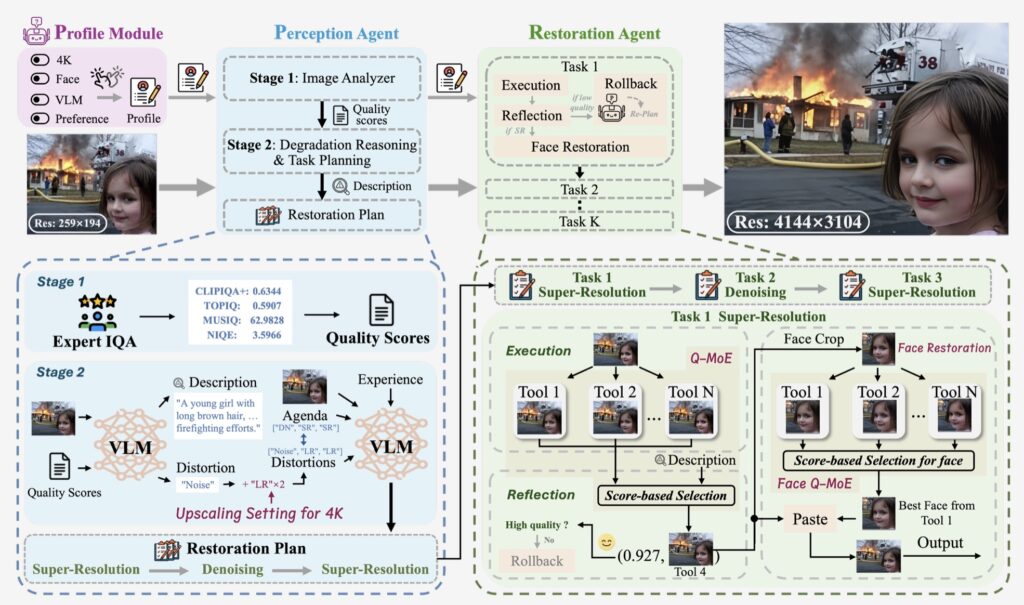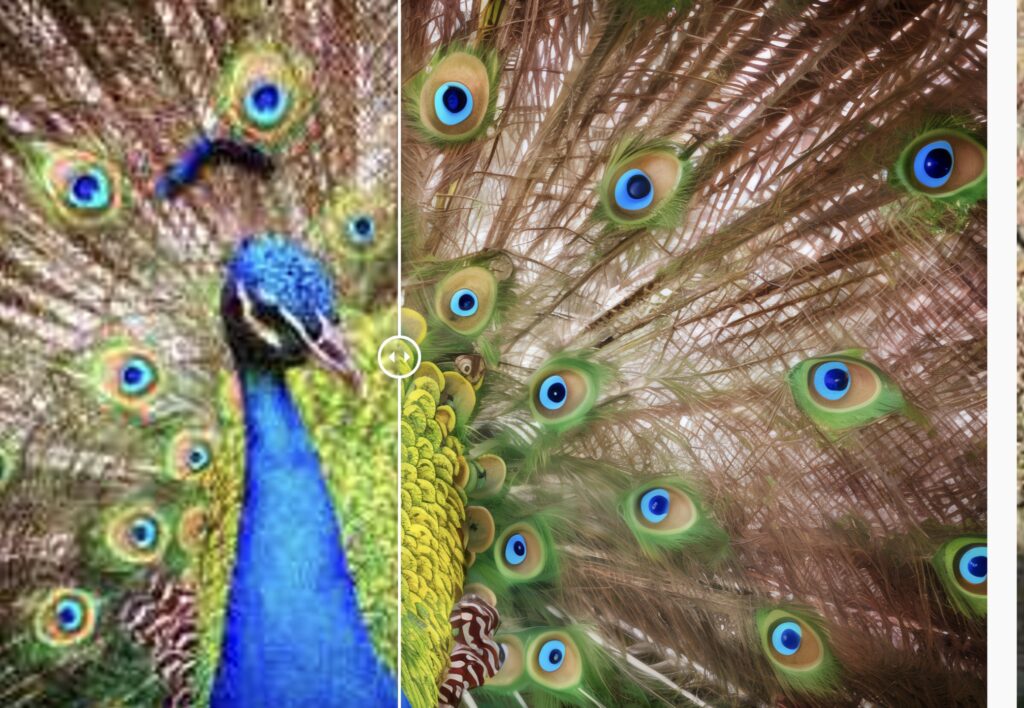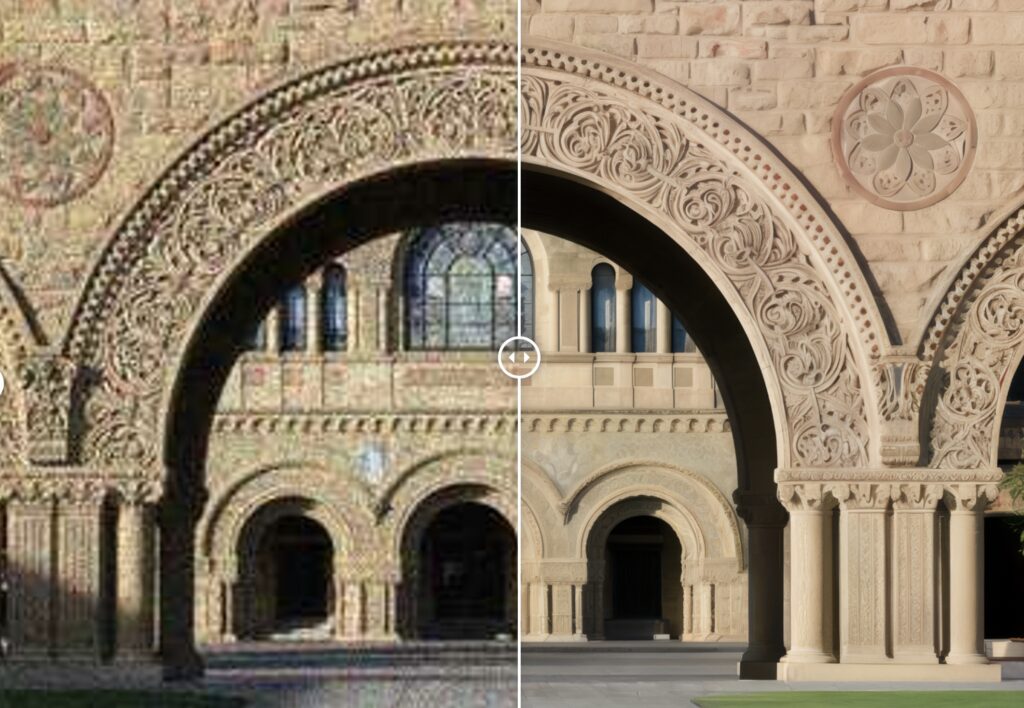Transforming Blurry Pixels into Photorealistic 4K Masterpieces
- Innovative Technology: 4KAgent is a cutting-edge, agentic super-resolution system that upscales any image, even from severely degraded low resolutions like 256×256, to stunning 4K clarity using a unified, generalist approach.
- Versatile Applications: This system excels across diverse domains, from natural images and portraits to AI-generated content, satellite imagery, and medical scans, setting new benchmarks in both perceptual quality and fidelity.
- Agentic Paradigm: With its unique blend of profiling, perception, and restoration agents, 4KAgent introduces a novel workflow that adapts to specific image needs, paving the way for autonomous vision-centric solutions.

Imagine a world where a grainy, pixelated photo from a decade ago can be transformed into a crystal-clear, photorealistic masterpiece, or where a blurry satellite image reveals intricate details previously hidden to the naked eye. This is no longer a distant dream but a reality with 4KAgent, a groundbreaking agentic super-resolution system designed to universally upscale any image to 4K resolution—and even beyond with iterative application. Developed as a generalist model, 4KAgent tackles the toughest challenges in image restoration, breathing new life into visuals that suffer from extreme degradation, whether due to low resolution, noise, blur, or other artifacts. Its ability to handle a vast array of image types, from everyday snapshots to specialized scientific imagery, marks a significant leap forward in low-level vision tasks.

At the heart of 4KAgent lies a sophisticated three-component architecture that sets it apart from traditional super-resolution methods. The first component, Profiling, customizes the upscaling pipeline to suit specific use cases, ensuring that each image receives a tailored approach based on its unique characteristics. Next, the Perception Agent employs advanced vision-language models and image quality assessment experts to deeply analyze the input image, identifying degradations and crafting a precise restoration plan. Finally, the Restoration Agent executes this plan through a recursive execution-reflection process, guided by a quality-driven mixture-of-expert policy that selects the optimal output at every step. This dynamic, adaptive workflow allows 4KAgent to address complex, real-world scenarios where multiple types of degradation often coexist—something that single-degradation models struggle to handle.
What makes 4KAgent truly remarkable is its versatility across an astonishing range of imaging domains. Rigorous evaluations across 11 distinct task categories and 26 diverse benchmarks showcase its unparalleled performance. Whether it’s enhancing natural images, refining portrait photos with a specialized face restoration pipeline for impeccable facial details, or upscaling AI-generated content, 4KAgent consistently delivers superior results in both perceptual metrics like NIQE and MUSIQ, and fidelity metrics such as PSNR. Its capabilities extend far beyond everyday photography, excelling in specialized fields like satellite imagery, fluorescence microscopy, and medical imaging, including fundoscopy, ultrasound, and X-ray scans. This broad applicability, achieved without the need for domain-specific retraining, underscores 4KAgent’s generalizability and practical utility for consumer, commercial, and scientific applications alike.

The development of 4KAgent builds on a rich history of advancements in deep learning for image restoration. Early works like ARCNN paved the way with compact convolutional neural networks for tasks like denoising, while subsequent innovations introduced residual blocks, attention mechanisms, and Transformer-based designs. Generative approaches, including GANs and diffusion models, further pushed the boundaries of what’s possible. More recently, general-purpose restoration models such as Uformer, MAXIM, Restormer, and NAFNet have shown impressive results across various degradation types, though often limited by their focus on single-degradation scenarios. The rise of All-in-One restoration models, like AirNet and ADMS, sought to address this gap by handling multiple degradations with a single network, but 4KAgent takes this a step further with its agentic framework, inspired by human-like workflows and augmented by large language model (LLM)-based reasoning.
Drawing from the latest trends in LLM-based agent designs, 4KAgent incorporates structured reasoning and dynamic decision-making to tackle the intricacies of image restoration. Pioneering works like RestoreAgent and AgenticIR introduced autonomous task identification and multi-stage workflows, while others, such as MAIR and Q-Agent, refined efficiency and scalability through multi-agent systems and quality-driven frameworks. 4KAgent synthesizes these advancements, integrating multi-expert strategies and specialized tools for perception and fidelity optimization. Its ability to adaptively plan, execute, and reflect on each restoration step mirrors the cognitive architectures seen in systems like CoALA, while its application-driven design echoes the domain-specific precision of medical and vision agents like MedCoT and MMCTAgent.

The implications of 4KAgent extend far beyond mere image enhancement. By establishing a novel agentic paradigm for low-level vision tasks, it catalyzes broader interest and innovation within vision-centric autonomous agents across diverse research communities. Its success in handling severely degraded inputs—transforming a distorted 256×256 image into a photorealistic 4K output—demonstrates not just technical prowess but also the potential to democratize high-quality imaging. From preserving cherished memories in old photographs to aiding critical analyses in medical diagnostics and remote sensing, 4KAgent is poised to redefine how we interact with and interpret visual data.
4KAgent represents a monumental stride in the field of image super-resolution, offering a unified, intelligent solution that transcends the limitations of conventional methods. Its robust performance across challenging domains, coupled with a forward-thinking design that leverages the best of deep learning and agentic workflows, positions it as a state-of-the-art tool for a myriad of applications. As we look to the future, 4KAgent not only sets a new benchmark for clarity and quality but also inspires the next wave of autonomous vision technologies, promising a world where every image, no matter how degraded, can tell its story in breathtaking detail.

